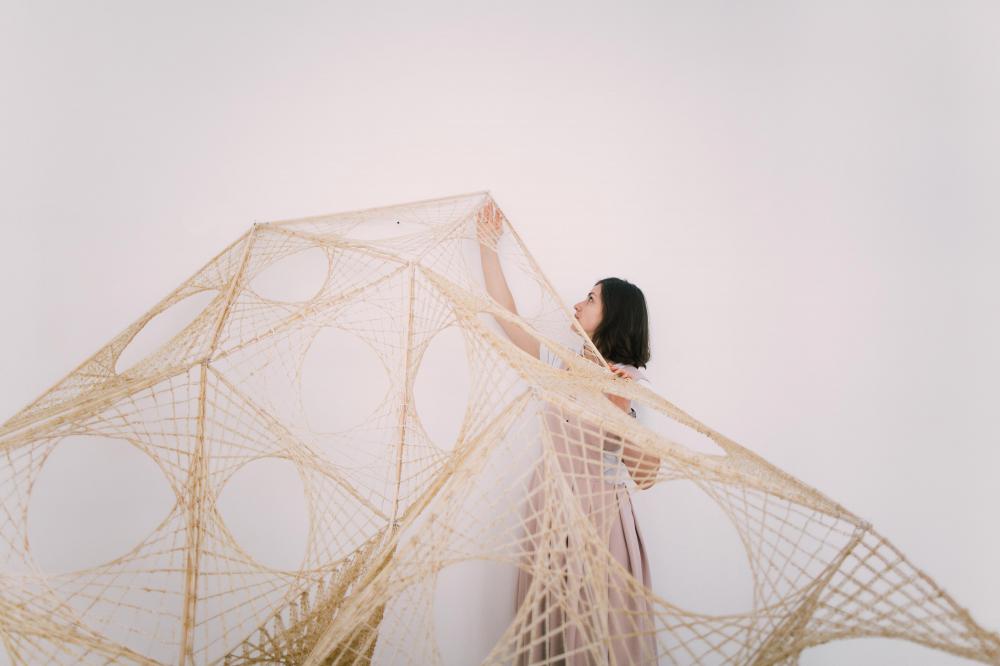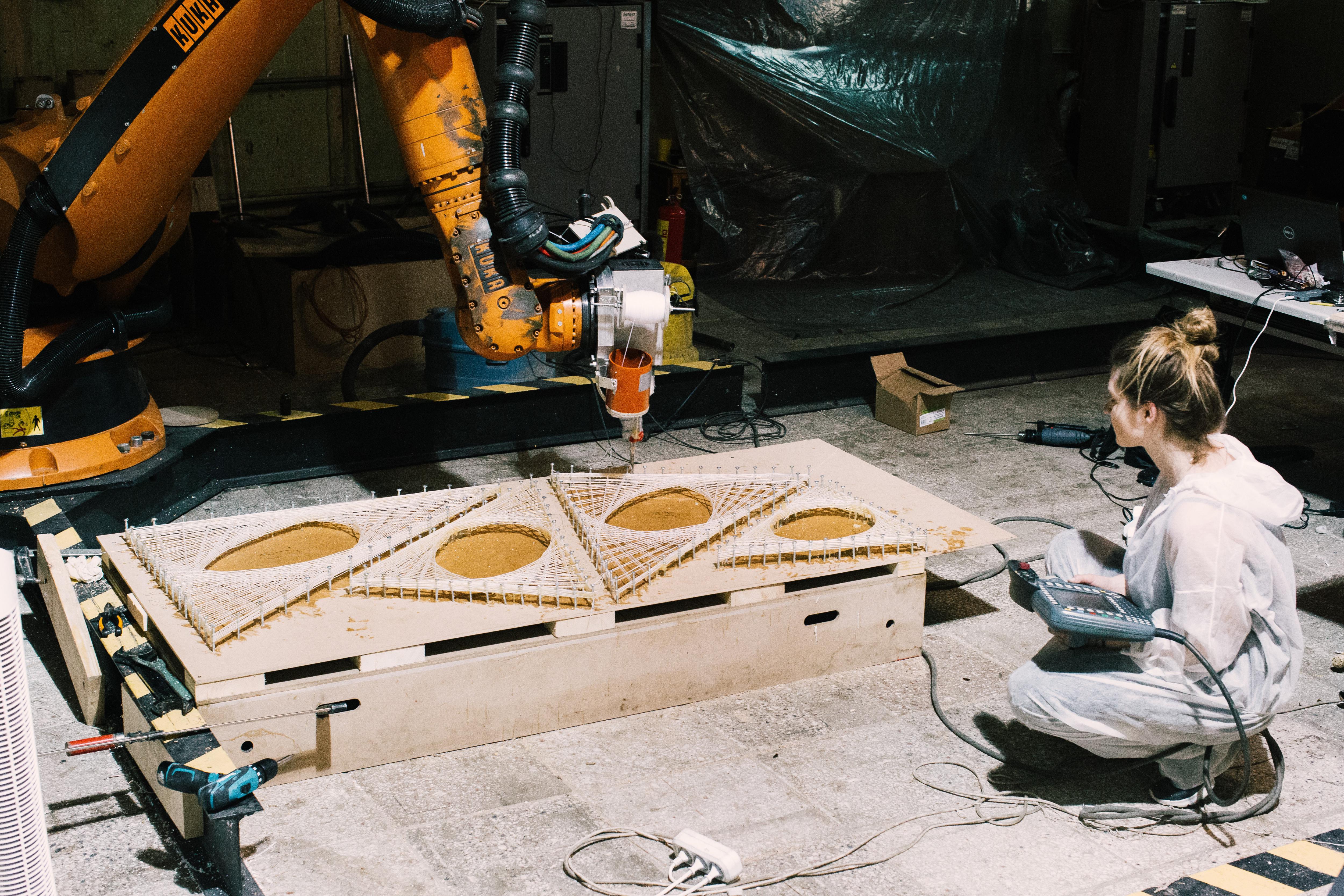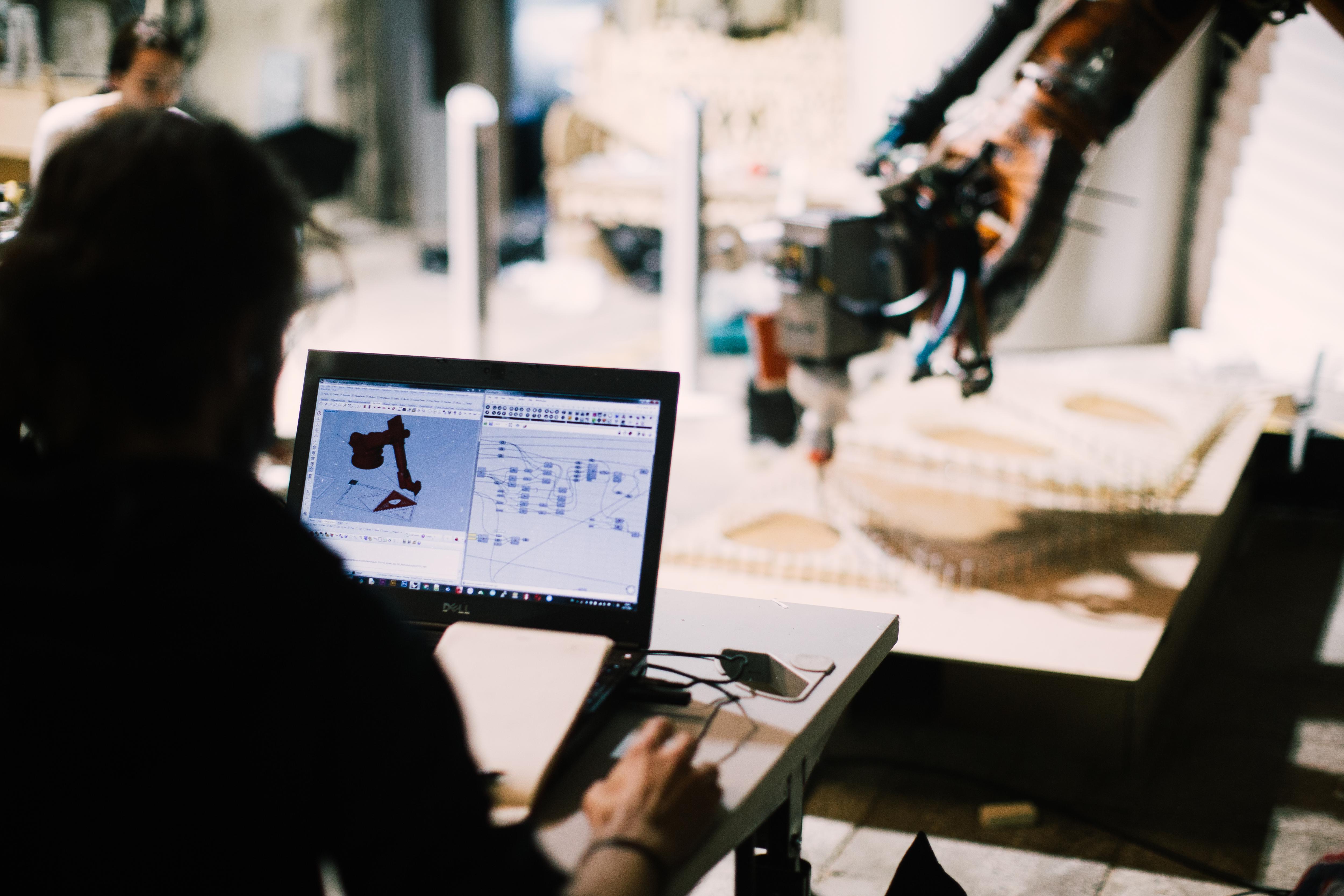Maria Kuptsova

INTERLACE 0
2017INTERLACE 0 is an exploration of the future construction scenarios for distributed, collaborative and adaptive systems. This research showcases the potential of computational design and construction through the incorporation of structural capacities, material behaviour, and fabrication logics.
Understanding the city as a dynamic, constantly changing environment, the project investigates an alternative local production methods for the generation of temporal spatial proposals through the definition of an urban collaborative system. The investigation process goes from micro scale of material research to the macro scale of urban connections. Proposing a use of sustainable organic materials for the network of urban elements, the project investigates the capabilities of natural fibres as a tensile material and bioplastic as binding and compressing material.

According to the range of materials and fabrication methods available on site, a fibrous structure composed of cotton threads and gelatine bioplastic mix was proposed. A number of tests were carried out to work out a proper composition. The final mixture consisted of one part of gelatine, one part of sugar, a tenth part of glycerine and two parts of water. Material tests show that after 3 days of drying this composite material can have structural abilities, high limitations of a lifespan and good load barring properties.
Materials test results were applied to a form finding in Kangaroo due to the loads affecting the whole structure. Transformation into a mesh, gave 45 panels, which were calculated and transformed in Karamba according to the capability of the materials. Therefore, each panel acquired its unique pattern, which was written to Kuka robot through the Kuka prc plug-in. A continuous model was discretised to a number of panels, each of them customised through the weaving. As these materials are lightweight and have high tensile strength, a radically different approach to fabrication becomes possible. The industrial robotic arm is utilised as a production tool. Due to the limitations of the machine's working area, the initial structure has to be divided to the range of variable triangle surfaces. The structure transmits forces through axial compression. For the form finding team was running digital simulations using particle-spring system in Rhinoceros 3D, Grasshopper plugin. This simulation allowed to investigate form in real time by updating forces, supports and physical properties.

Research on materials proved that the structure has a limited durability and that its decay can be programmed by its components and weather conditions of a specific region. This suggests that structure itself is not anymore a permanent object on site, but it can evolve into new series of objects, learning by the experience and data, inherited from the previous generation. The lineage of the objects could create the whole database, recording the changes within the system and collecting information about the city around it.
Therefore final proposal consists of two parts: temporal part biocomposite fibrous structure and permanent part - interface system for recording and representing information collected on site. The data could be not only collected, but shared with the user in real time by the means of interaction system. The light interaction is divided into two parts, each LED stripe connected to one Arduino. Proximity sensors are fixed to the bottom part, among of the legs of pavilion, facing different directions. As the citizen enters the zone of one of the sensors, the saturation of light is rising and the colour turns to warmer shades from coldest ones. The same code is applied to each systems, so the warmest colour could appear only if two or more people come closer. This way the object creates not only the point of attraction but the point of interaction for people to communicate with each other. Collected data is accumulated in the system to form the future generation of the structure, and it creates an open transparent interface for the user interaction, what makes these structures an attracting points on site.
Interlace 0 is a project by IAAC - Institute for Advanced Architecture of Catalonia, GSS MSC - Global Summer School Moscow 2017 in collaboration with Shukhov Lab of HSE Graduate School of Urbanism.
IAAC PROJECT DEVELOPMENT TEAM:
Maria Kuptsova Project Development: Concept, Robotics, Computation
Rodrigo Aguirre - Computation
Kunaljit Singh Chadha - Robotics
Aldo Sollazzo - Head of IAAC Visiting Programs
PROJECT TEAM:
Facutly: Maria Kuptsova, Elena Mitrofanova, Ivan Mitrofanov
In collaboration with: Alexander Lysov
Advisor: Vicente Guallart
Assistants:
Roman Timashev, Vladimir Petrosian, Filipp Sevostianov
Students:
Anastasia Appalonova, Anastasia Slavina, Alfiya Shakuryanova, Enrico Cacciapuoti, Jessica Nguyen, Irem Kucukali, Irina Sorokina, Kirill Podobed, Ksenia Gordeeva, Polina Aleshchenko, Svetlana Vasilenko, Svetlana Shaporeva
SPECIAL THANKS TO:
Abdullah Ibrahim, Eduard Haiman, Vadim Smakhtin, Katya Larina, Timofey Tavlintsev